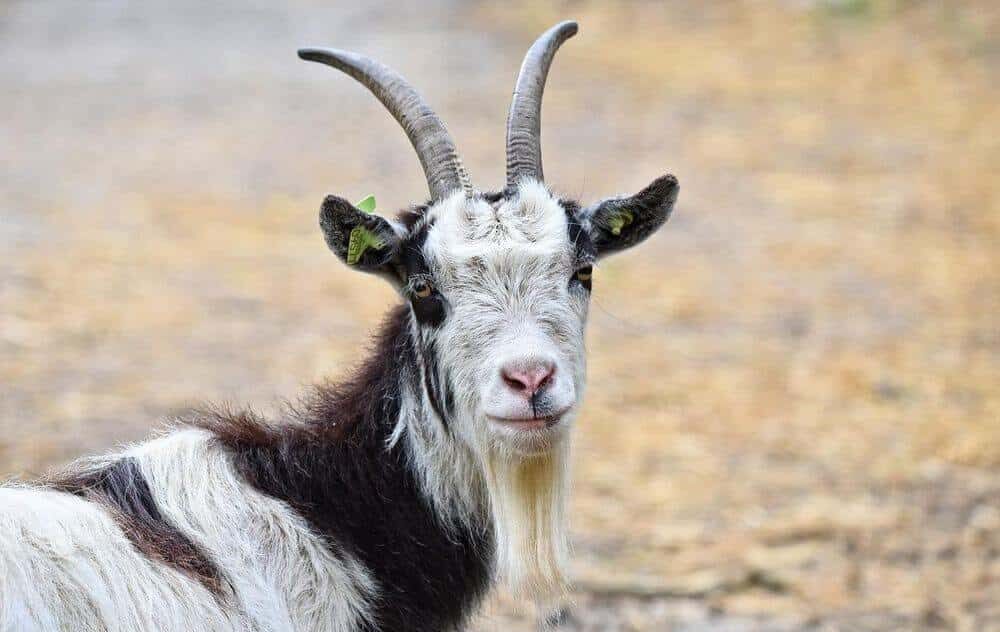Certain goat breeds, such as the Alpine goat, have distinctive beards on their faces. Going by traditional gender rules, it would be natural to assume that the bearded goats in any breed would most likely be male goats. Strangely enough, this doesn’t hold true for all goat breeds. It’s also not uncommon to find a female bearded goat.
So, why do goats have facial hair, and what do they do with those awesome beards? Let’s find out some facts surrounding bearded goats and how to tell whether or not they’re male or female.
Why Do Goats Have Beards?
We don’t know exactly why goats have beards, but it’s could be the same reason that most men who live in very cold places have beards.
Since the typical domestic goat is believed to be a descendant of the Eurasian wild goat—a goat breed that lives in extremely cold locations and prefers high altitudes— it is possible this goat breed evolved to grow a beard as a way to insulate its face against such extremely low temperatures.
This explanation doesn’t hold much water in goat terms. This is mostly because a goat’s face already has fur cover. As such, a beard wouldn’t provide much protection against the elements.
Another idea is that a beard can protect the goats throat from thick brush or attacks. This can explain why wild goats have a more scruffy beard.
Male Goats Impress Female Goats With Their Long Beards
As in the peacock world, the more vivid the tail feather colors, the more attractive the peacock is to females, similar to long moose antlers. For goats, the thicker, longer, and more robust the beard, the more likely the buck (a male goat) is to win females (does). However, it isn’t just about having the most naturally attractive beard with male goats.
Some bearded goats take the time to groom their beards. This keeps them looking long and smooth. Of course, for male goats, just having a long beard won’t always do the trick. They also have to be big and strong to fight off competitors.
Male Bearded Goats Urinate on Their Beards
During mating season, they frequently urinate on their beards, front legs, and chest, which may appear disgusting to humans. Like licking, this act is designed to attract female goats, and it works. This is because a buck’s urine contains pheromones that give it an extremely pungent smell. These pheromones make the buck irresistible to females.
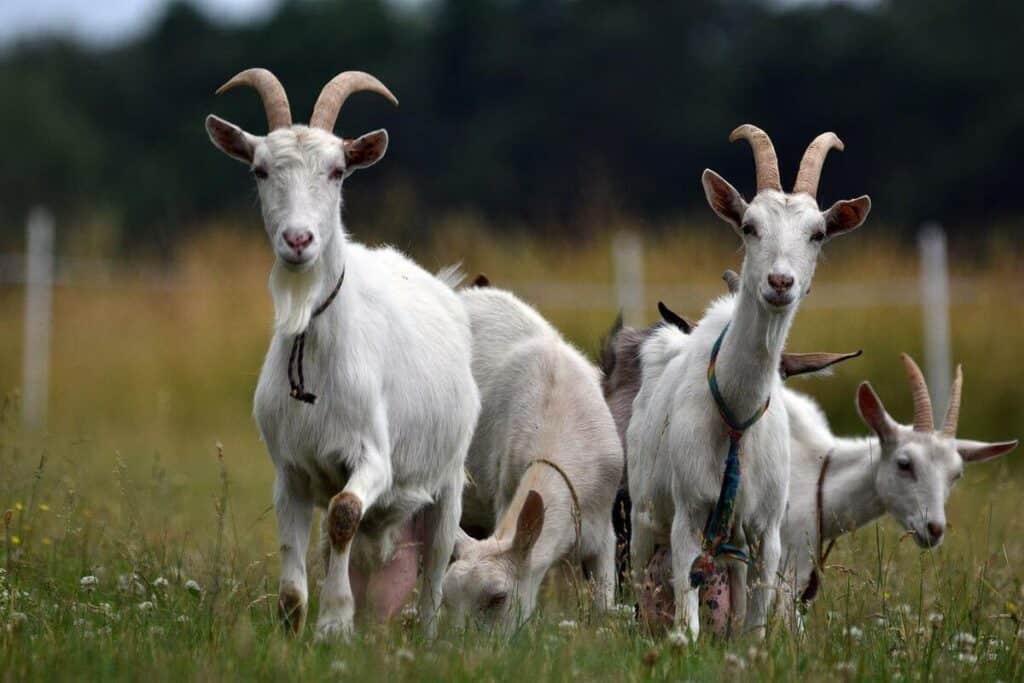
Can Female Goats Have Beards?
Yes. In some goat breeds, such as the Toggenburg goat and the Rocky Mountain goat, both males and females have beards. Beards on goats are a lot like horns.
The goat horns and beards in male goats are often more pronounced, but beards in goats are not unique to males.
You might be surprised to hear both males and females can grow horns. Like their beards, they tend to be smaller on females, but even females can grow long beards and horns.
Female Alpine goats may have beards like the bucks; however, it is generally shorter and thinner.
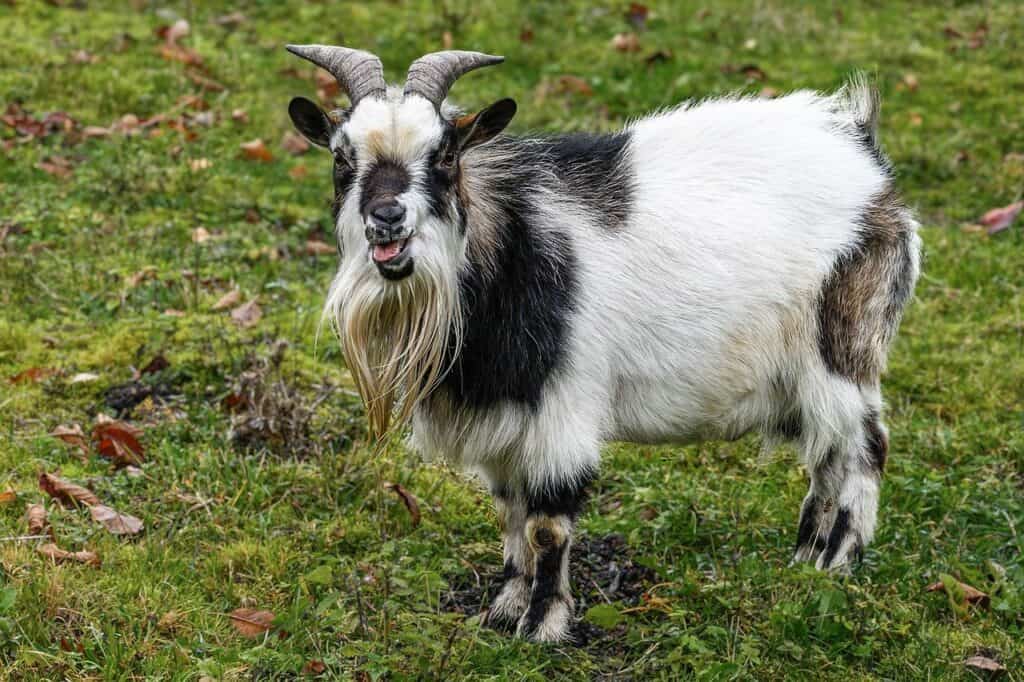
Factors Leading to Bearded Goats
As you can imagine, not every goat breed has bearded goats. Several different factors lead to beards in goats. Here are some of those factors.
Genetics
As with humans, your genes play a significant role in determining your appearance. In most cases, crossbred goats tend to have a number of traits passed down to the offspring by the dominant gene. This not only determines the presence of beards in male goats but also in females.
Age
For most goat breeds, the beards grow with age. The older the male goat gets, the more prominent its beard becomes. Beard growth tends to pick up during the goat’s prime, and since goats don’t shed their beards, the older the goat gets, the thicker the beard will become.
Sex
In many goat breeds, it’s the buck that has the beard. However, as we have already seen, it’s not uncommon for some female goats to be bearded. That said, it’s the dominant male hormone responsible for beards and horns in goats.
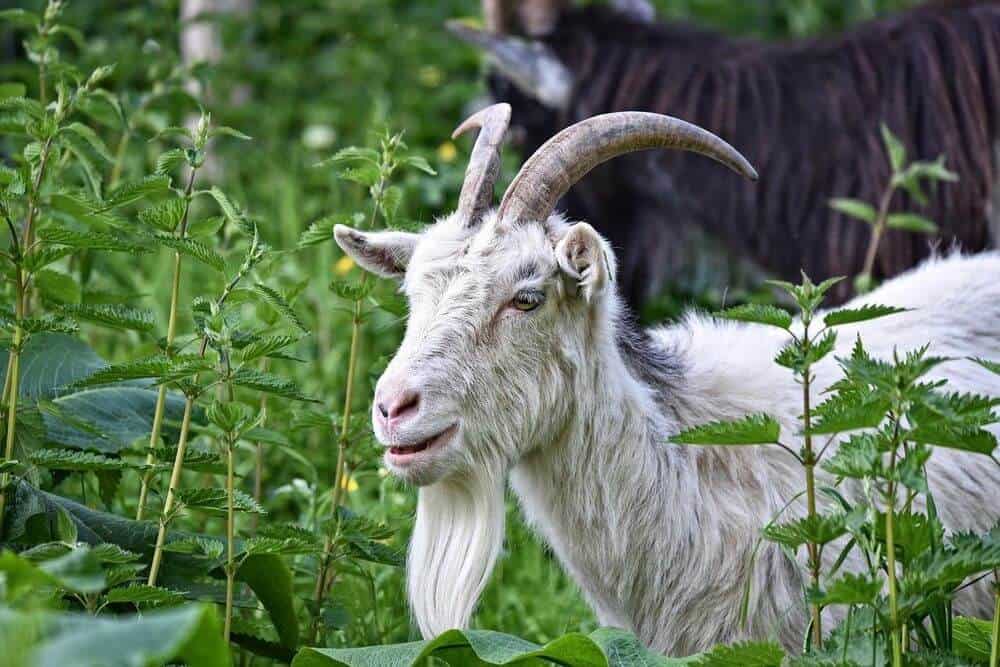
Habitat
This takes us back to the original explanation of why goats have beards. The Eurasian wild goat lives in extremely cold, high-altitude places. The beards grow to keep the goat warm.
Unless the goat has the bearded genes, many domestic goats won’t have very prominent beards. This isn’t the case with wild goats. These goats tend to have bushy beards, maybe because they don’t have the luxury of shelter like their domesticated goat counterparts.
The presence of beards in goats isn’t a very well understood phenomenon. While genetics explains most of it, some odd occurrences baffle the mind. For instance, it’s not uncommon for some female goats to only start sprouting beards once they get pregnant. In many cases, these beards slowly recede once the female goat has given birth. This could be due to the hormones during pregnancy.
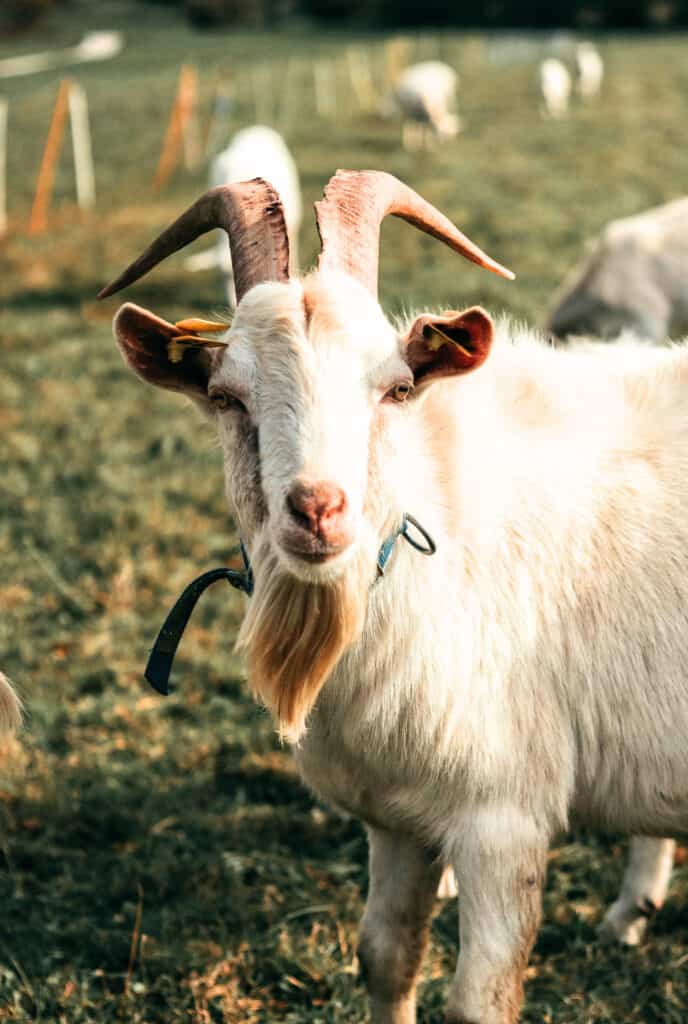
FAQs
What do we call a goat’s beard?
As you would imagine, “goatee” is the term used to describe a goat’s beard. It’s the same term used to describe the same kind of beard on human faces—a style which, coincidentally, was inspired by bearded goats.
Do female goats also have beards?
Yes, some female goats are bearded, but not all of them. The biggest difference between bearded female goats and male goats is that the beards on the female goats aren’t often as pronounced. In many cases, it’s often just a small tuft of hair right underneath their chins.
Do goats groom their beards?
As with most humans with beards, male goats take pride in their beards and often groom them. It’s not only a matter of pride for the bearded goats but also a way to attract females.
Featured image credit: MabelAmber, Pixabay

